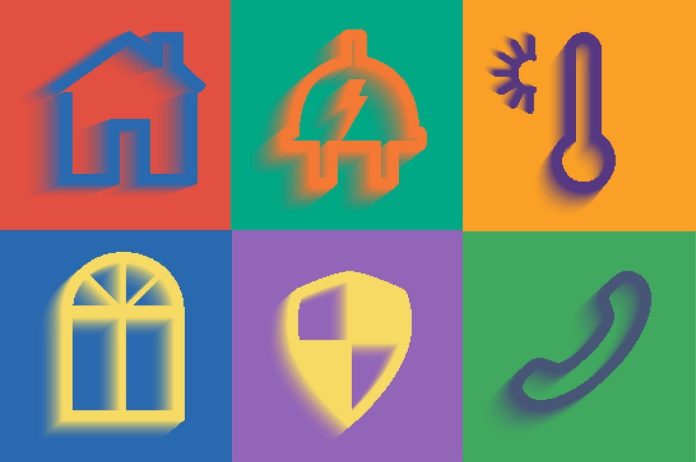What are the greatest opportunities facing the smart home market in 2020 and beyond? The Z-Wave Alliance put this question to smart home industry commentators as part of its State of the Ecosystem Report the responses highlight some key issues.
Where are the opportunities and challenges in the smart home market? The answers vary and their nebulous nature highlights the tension that exists in the smart home market, where low end systems compete with high end solutions. But there are threats and opportunities that point the way forward – and they offer hints to the electronic security industry, too.
According to Amy Wallington of HiddenWires, the biggest hurdle facing consumer adoption is the lack of interoperability.
“So many devices do not work with other devices, making it difficult and confusing for the homeowner and limits them as to what they can buy to work in their home,” Wallington said. “Also, many consumers do not see the benefit of owning smart devices over traditional appliances. Some are put off by the complexity of these gadgets.
“One of the biggest opportunities for the growing smart home market is the environmental impact it can have, playing its part in the reduction of global warming. Smart devices and automated homes can help with energy management and cost savings. Something as simple as a sensor can ensure that lights and temperature control, for example, are only used when needed if someone is in the room. Another opportunity which not enough people are realizing is the healthcare benefits. Unobtrusive monitoring can help to keep the elderly and disabled in their homes for longer while keeping them safe and reducing the need for caregivers.”
For Stacey Higginbothom of Stacy on IoT, COVID-19 looms large in the future of smart home solutions but may have a (very tarnished) silver lining for some technologies.
“In post-COVID-19 world (the pandemic) will have helped us overcome some of the hurdles to mainstream adoption of smart devices by offering a reason to pick them up and install them,” Higginbotham explained. “The post-COVID-19 world, however, can’t help with the other big challenge — interoperability. Consumers will not accept frustration when trying to purchase devices that should work together, nor will they accept a lengthy and convoluted installation effort.”
Developers of technology have a role to play in smart home acceptance in the future.
“Building trust in the providers of smarter homes will not only advance mainstream adoption, it will also ensure that providers of such gear remain compliant with upcoming laws designed to help customers understand where their data is going and to how to control its use,”
said Higginbotham.
Interoperability keeps popping up in the responses – it would be no surprise to hear this coming from Z-Wave manufacturers, but these are industry commentators and have no skin in the game.
“If a technology is going to make the leap from early adopters to mass adoption, it needs to be simple to set up/install/use, and it has to work reliably, all the time,” argues Jeremy Glowacki of Residential Tech Today. “To gain traction with the masses, it would also need to truly solve a problem or bring joy or comfort to people in some way.
“Conversely, a big opportunity in the smart home is providing a robust home network with even Wi-Fi coverage throughout. In uncertain times, most consumers would love to know they can rely on their network infrastructure to operate at its best and if it doesn’t have a trusted professional to text or call to fix it quickly.”
Glowacki is not the only one pointing the finger at networks.
“The biggest hurdle is the network,” says Tim Albright of AVNation. “Since I think that’s going to be solved, the next will be a crowded field of products. It will take a few years for the truly horrible products to fail and the good ones to remain.
“The greatest opportunity may come out of the COVID-19 crisis – the need for a more robust home network. Millions of workers across the globe are realizing their network is fine for streaming Netflix but never realized how little it could really handle. Dealers will have the opportunity to build even stronger foundations for networked devices.”
For Tony Savona of Residential Systems there’s an opportunity in higher end solutions.
“I think the greatest opportunity for the smart home market is the single, whole-home control system,” Savona says. “Now that people know what a smart home can do for them, I see them as wanting to maximize its benefits.”
Health is another area that proffers opportunity.
“I think wellness will be the big opportunity for integrators going forward,” says Bob Archer, of CE Pro. “Consumers are rapidly learning about smart homes and the next phase of that educational process will be the benefits of wellness and services such as circadian lighting, water and air purification and other similar amenities.”
For Paul Lamkin of The Ambient the future offers the opportunity of the ordinary. It’s an insightful take, when you consider in the 1970s hardly anyone had colour TVs or clothes dryers and almost no one had a dishwasher.
“I think we’ll move away from seeing things that are internet-connected as futuristic and instead, expect things to simply be smart,” Lamkin said. “Already there are white-good manufacturers whose flagship kitchen products all come connected as the standard, and I expect that to evolve into other areas of the home including tools, storage, bathrooms, decorations and more.
“I think people will not only want smart products for automations and the like, but for self-diagnosis, self-cleaning and so on. I think the term ’smart home’ will die out as people just assume and expect pretty much everything in their houses to be smart; aside from the stuff we’re used to seeing as smart now.”
#sen.news












